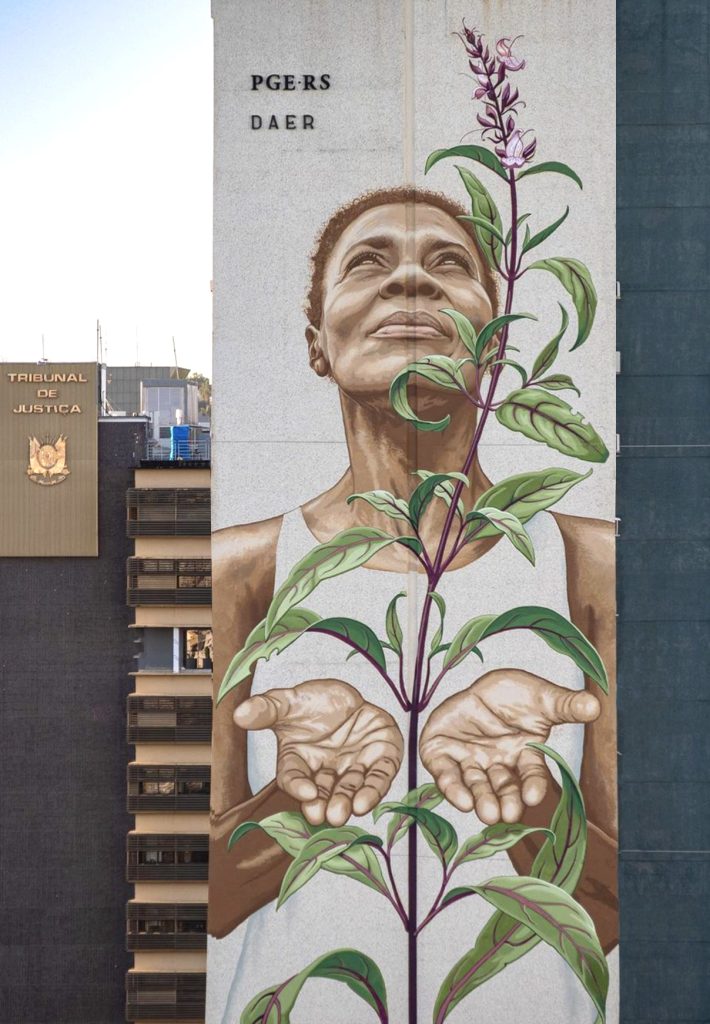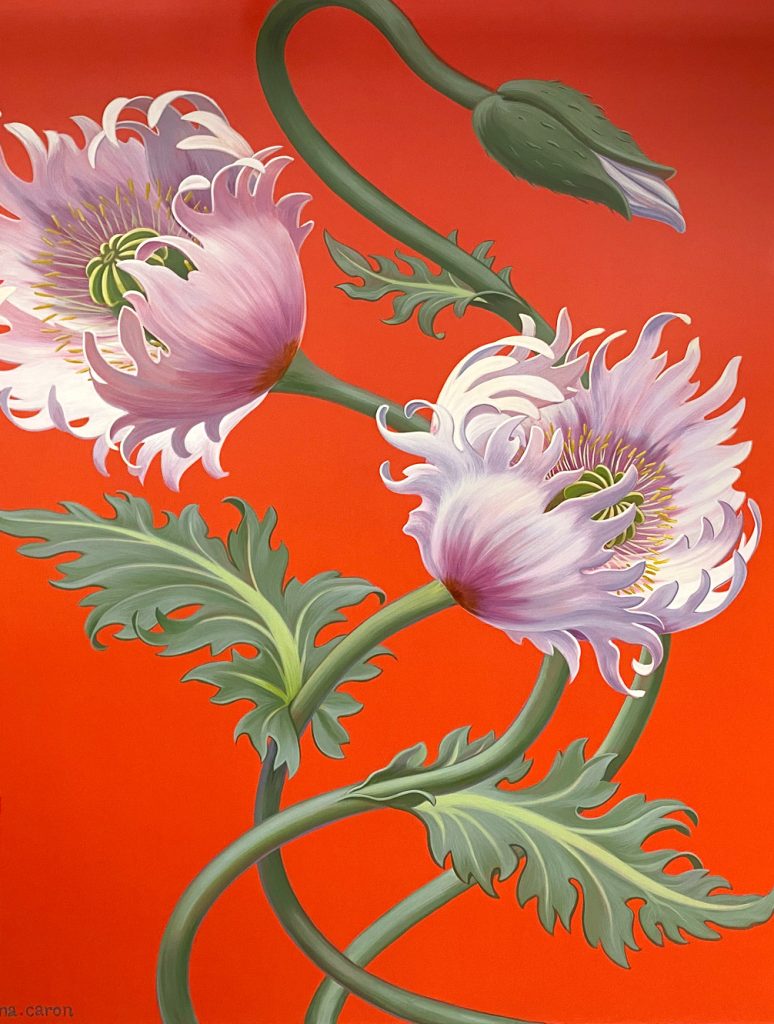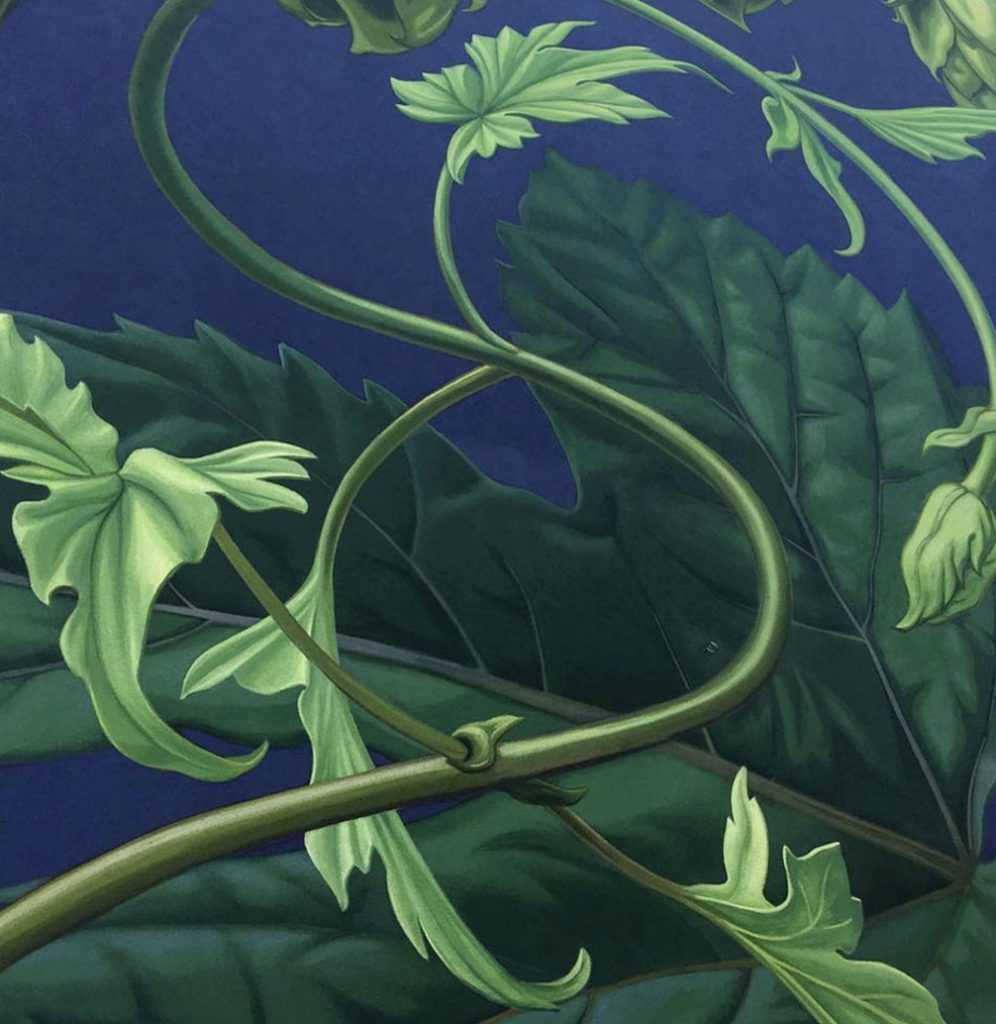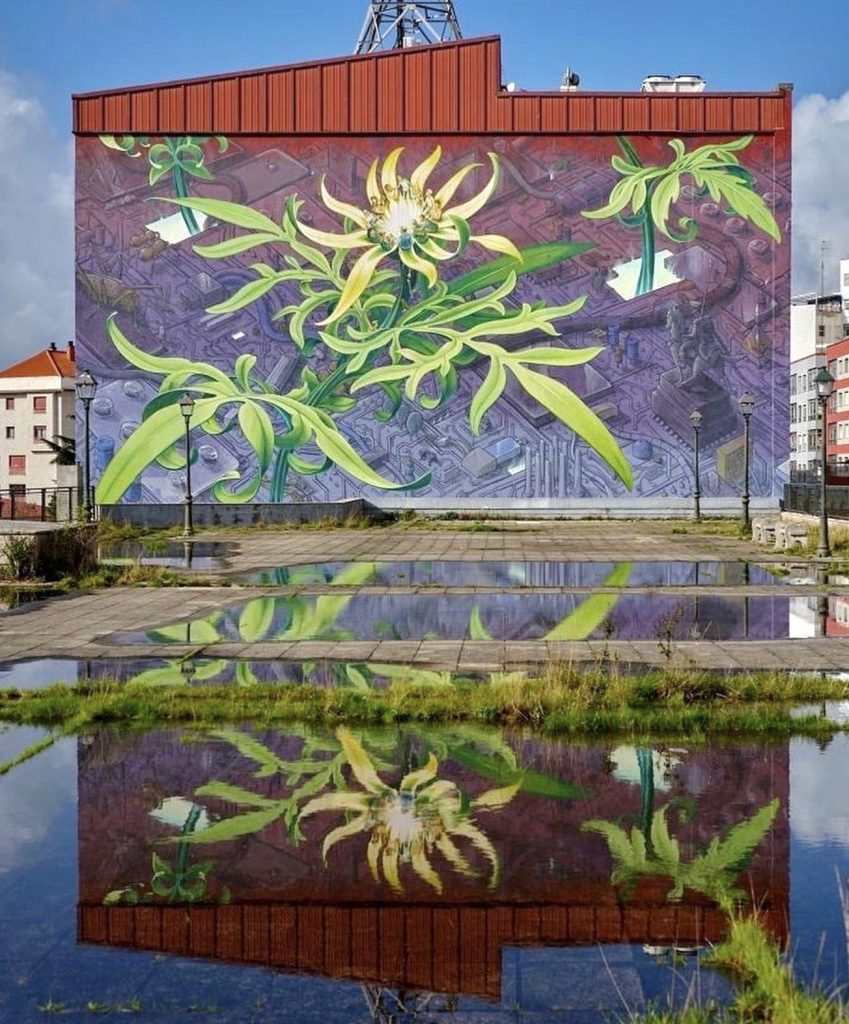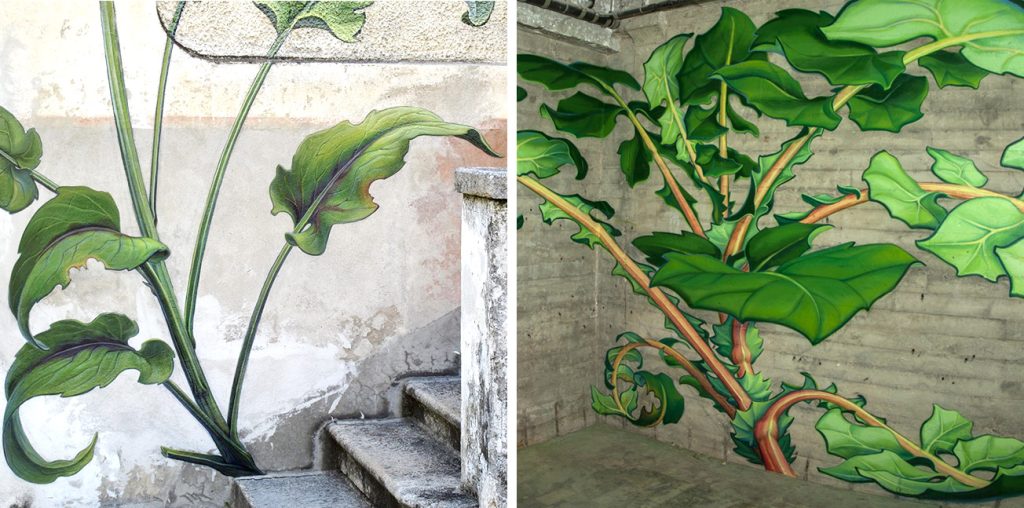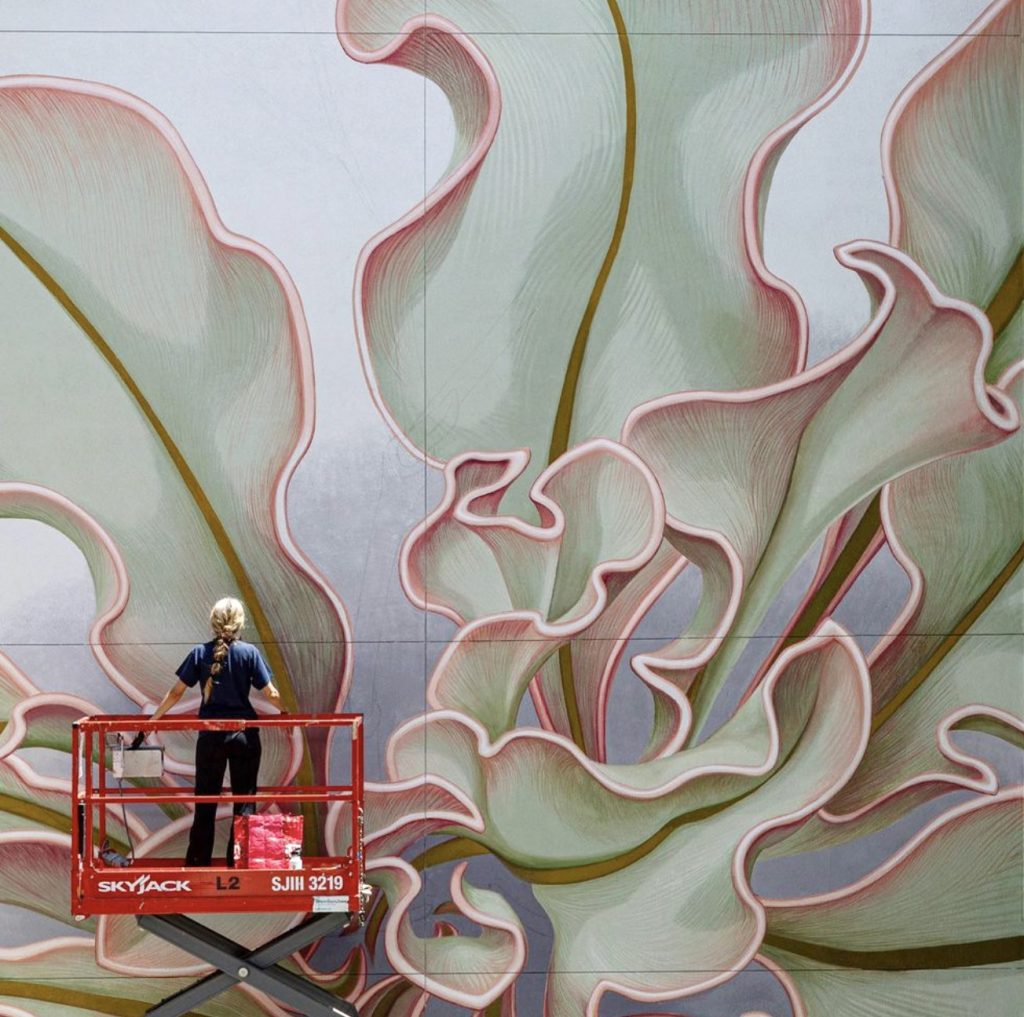
Guerrilla gardeners plant flowers “clandestinely” in degraded places.
Mona Caron, somehow, does the same with her brush. The aim is the same as well: make the beauty flourish where there is none. Rundown districts, proletarian suburbs, anonymous skyscrapers.
However, Mona Caron, contrary to the guerrilla gardeners, sows her seeds of beauty rising from the ground and pointing straight towards the sky, because the peculiarity of his monumental works is to literally climb on the facades of the buildings, “blossoming” where the view begins to get lost against the horizon. With a magnificent visual impact.
Growing up in the woods of Switzerland, American by adoption, Mona Caron is the antithesis of the mannered artist. Her “uniform” is limited to sneakers and wide trousers, her hair tucked underneath the helmet, essential to safely create the gigantic murals that made her famous internationally.
The subject is symbolic: ordinary flowers and weeds growing spontaneously in the cities, breaking through the cracks in concrete walls. A tribute to resistance, or resilience, to use a rather misused but very current term, of those that “have no place in this world – the artist explains -, that are not part of plans, and nonetheless go on fighting and pushing to emerge”.
The series of the hurban weeds, as Mona Caron calls them, started on the walls of San Francisco, where the artist lives, and then crossed the borders of the United States and “invaded” the skyscrapers of San Paolo or gray suburban apartment blocks in Portugal and Sweden.
The most appropriate term to define her performances is artivism, a crasis between art and activism, a neologism created by the artist-tightrope walker to disclose the sense of these vertical works hallmarked by a strong political significance.
“I look for clandestine plant life in the city streets. When I find a particularly heroic specimen growing through a fissure, I paint it big, at a scale inversely proportional to the attention and regard it gets. Against the hardest cement, against all odds, we too can find our fissure, and keep pushing. That’s the way change happens”.
To create her murals, Mona Caron often collaborates with Brazilian Mauro Neri, her life partner, and many other artists-activists. Where she makes flowers bloom, they restore body and dignity to the invisible – homeless, indigenous, seasonal workers – portraying them in the little big daily battles. Making them feel represented.
